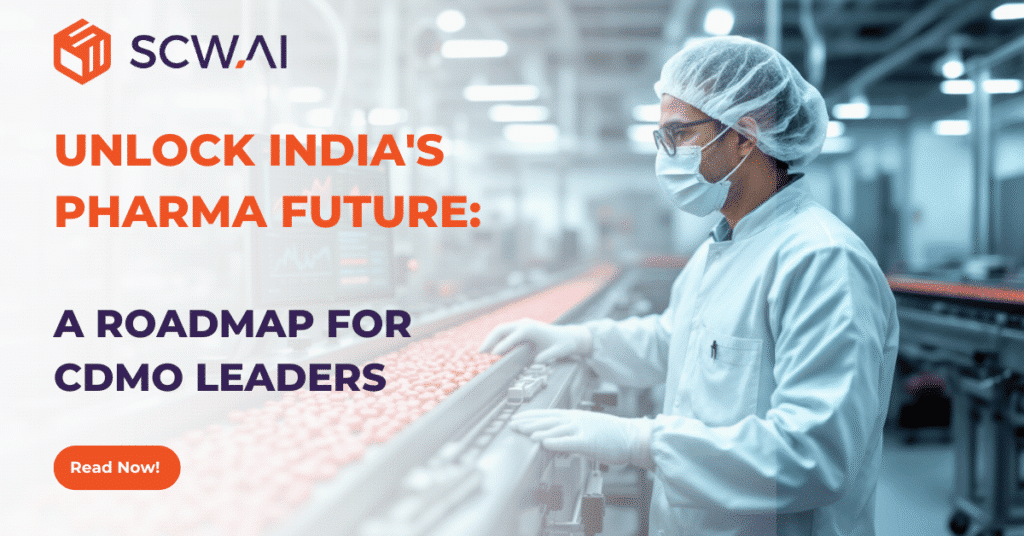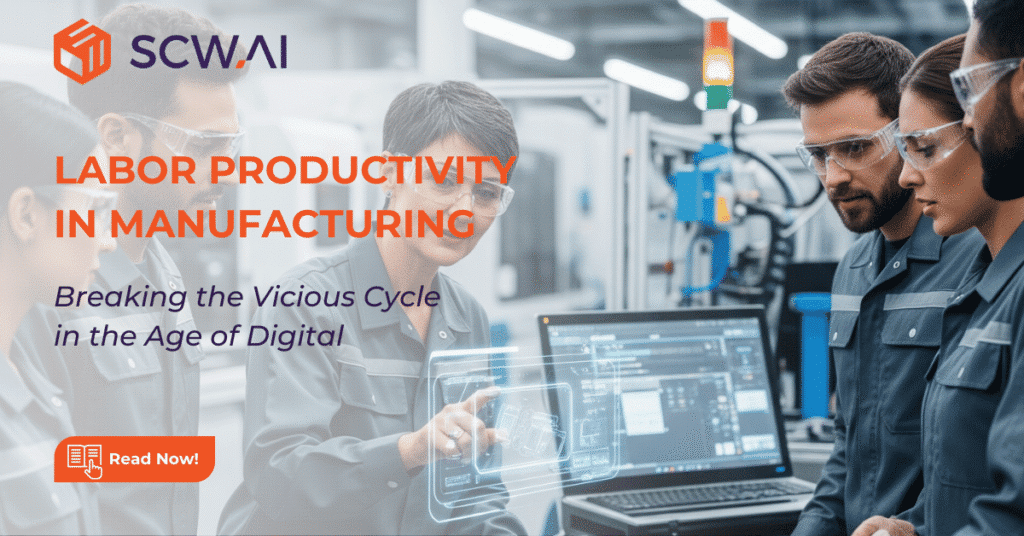The manufacturing industry is undergoing a profound transformation, driven by a new set of global megatrends—particularly in developed economies. While some of these, such as digital transformation, have been evolving for years, the rapid emergence of artificial intelligence in manufacturing has significantly accelerated their impact and reshaped their strategic value.
At the same time, several structural shifts are challenging long-held assumptions. The decline of globalization, a move away from offshore production, stagnating labor productivity, and increasing difficulty in attracting younger talent all contrast sharply with the dynamics that defined the early 2000s. These evolving realities are redefining what the future of manufacturing will look like and demanding a fundamentally different approach from decision-makers.
This article aims to provide manufacturing executives and managers with actionable insights into the future of manufacturing by examining the economic, political, technological, demographic, and environmental forces shaping the industry through 2030. Unlike many narratives that emphasize breakthrough technologies and futuristic optimism, we take a realistic approach—viewing technology as an enabler rather than the determiner. Our focus is not on listing cutting edge technologies, but on offering strategic insights that guides manufacturers in adapting their operations, supply chains, and talent models to four critical megatrends, ensuring their ability to thrive in a shifting global landscape.
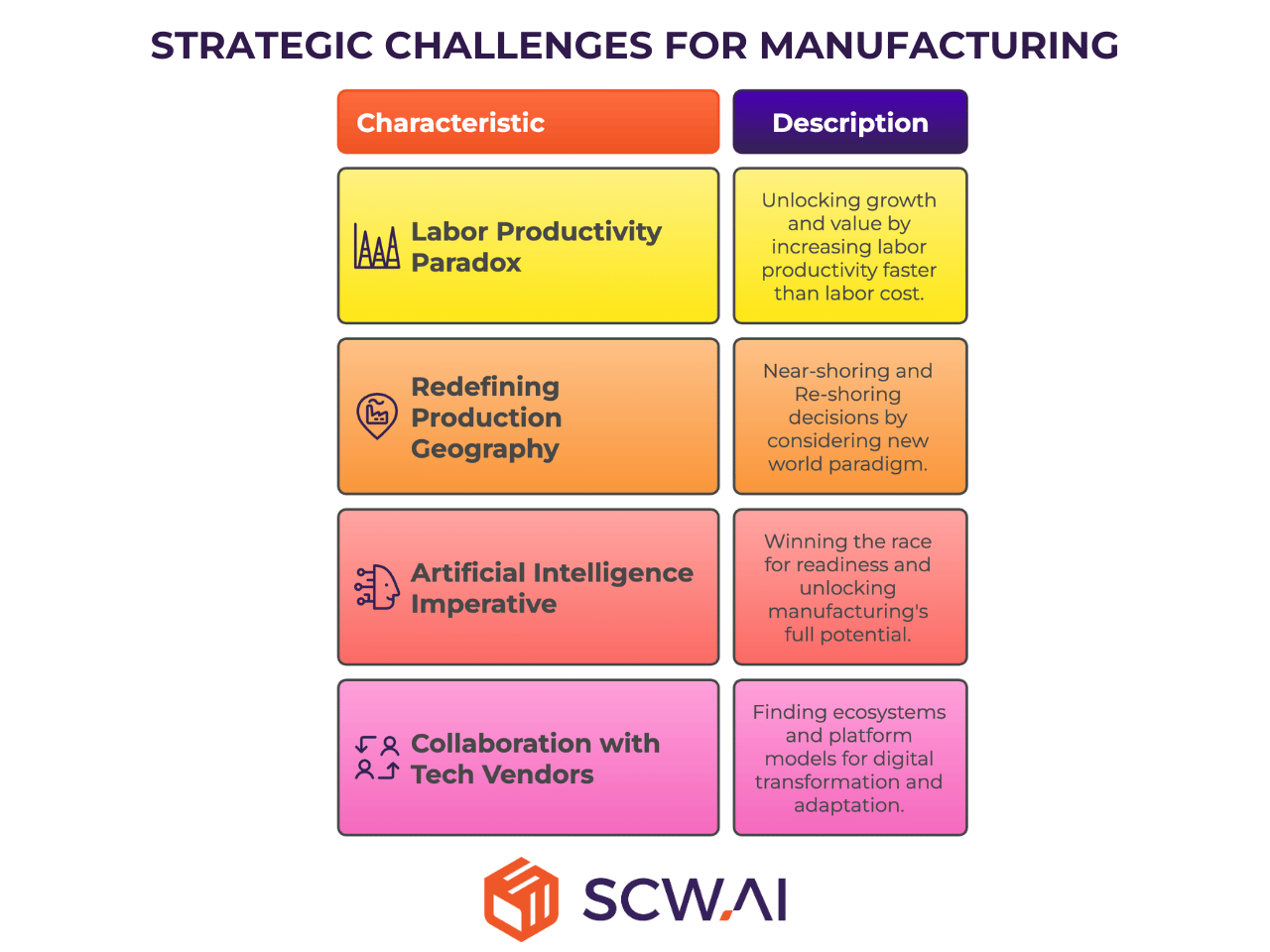
1. Reversing the Labor Productivity Paradox: Unlocking Growth and Value
The manufacturing sector in developed economies is grappling with a critical and persistent challenge: stagnant labor productivity in the face of rising costs and chronic labor shortages. According to data from the Federal Reserve Economic Data (FRED), U.S. output per labor hour has remained largely flat since 2010, even as unit labor costs have surged by over 50%.
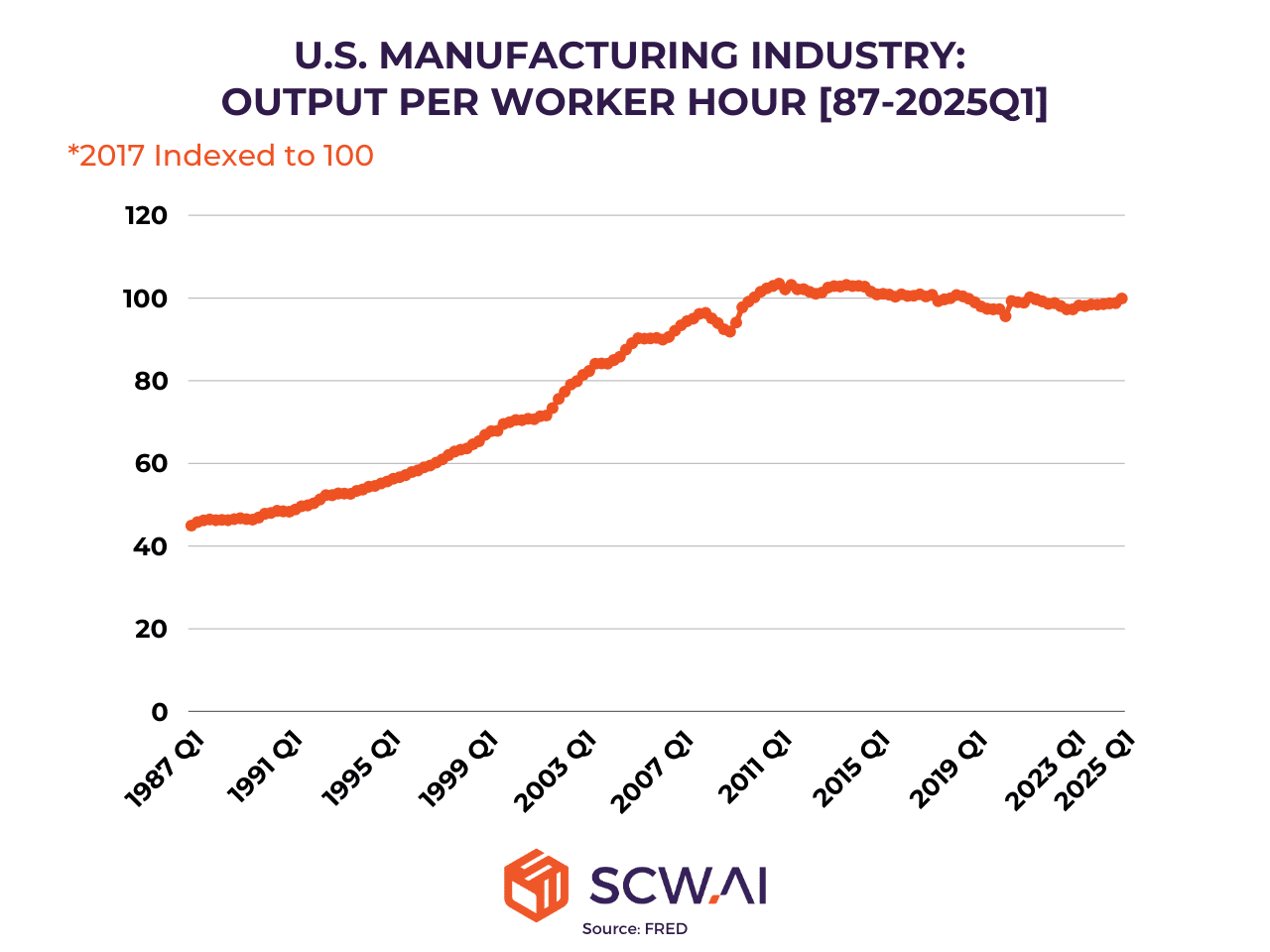
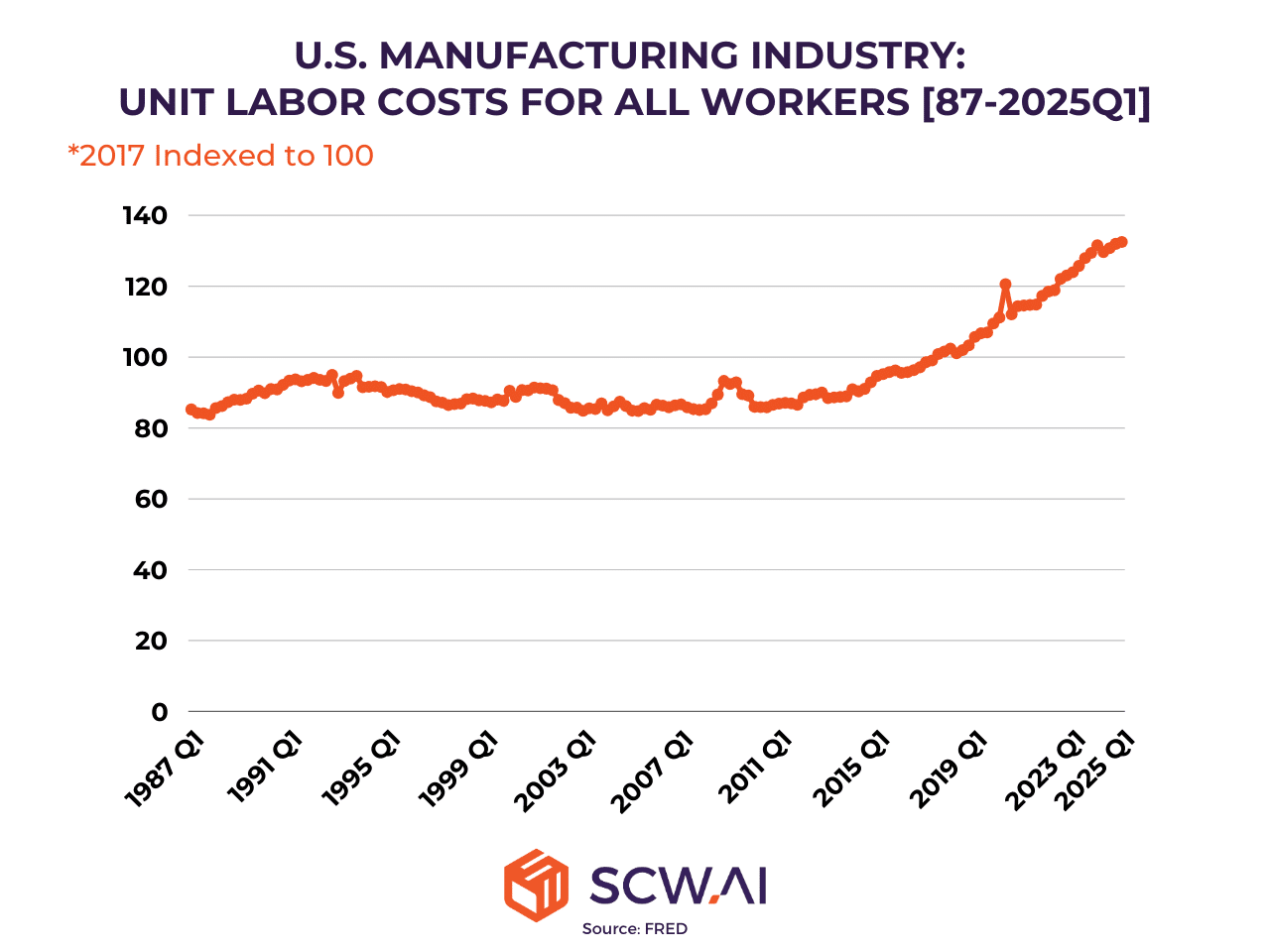
This divergence signifies an increasing relative cost of labor without a commensurate increase in output. When coupled with demographic realities like aging workforces and a decreased willingness among younger generations to pursue manufacturing careers, this trend poses a significant threat to future manufacturing output if left unaddressed. Fundamentally, a dwindling labor pool means fewer hands to maintain current production levels, let alone scale operations.
This labor productivity paradox is not unique to the United States. As emphasized by Mario Draghi, former President of the European Central Bank, similar stagnation trends are visible across the European Union and other advanced economies, making this a global phenomenon demanding urgent strategic attention.
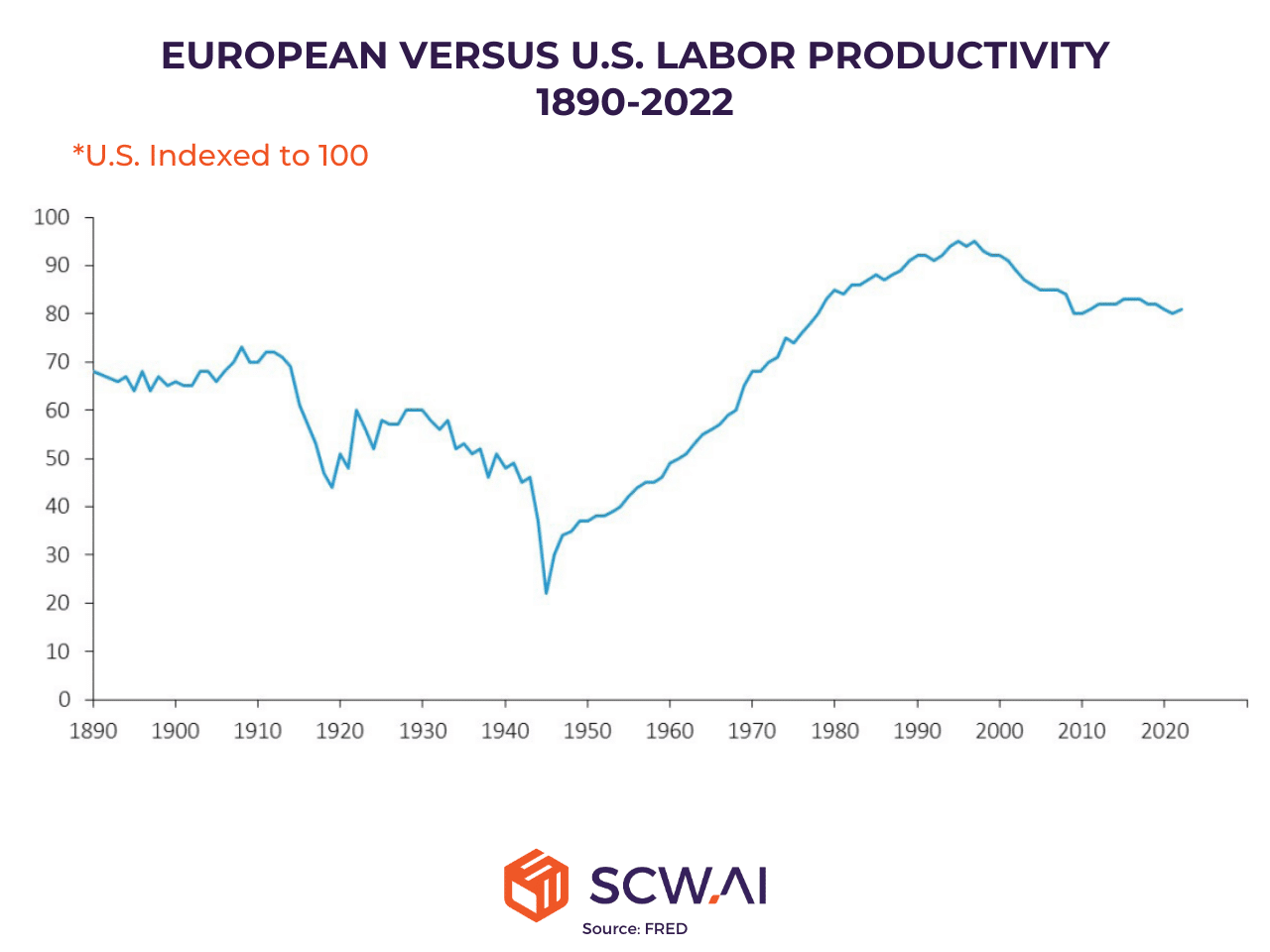
The Vicious Cycle of Stagnant Productivity
At the core of this issue is a self-reinforcing loop—a negative feedback cycle that erodes productivity and competitiveness:
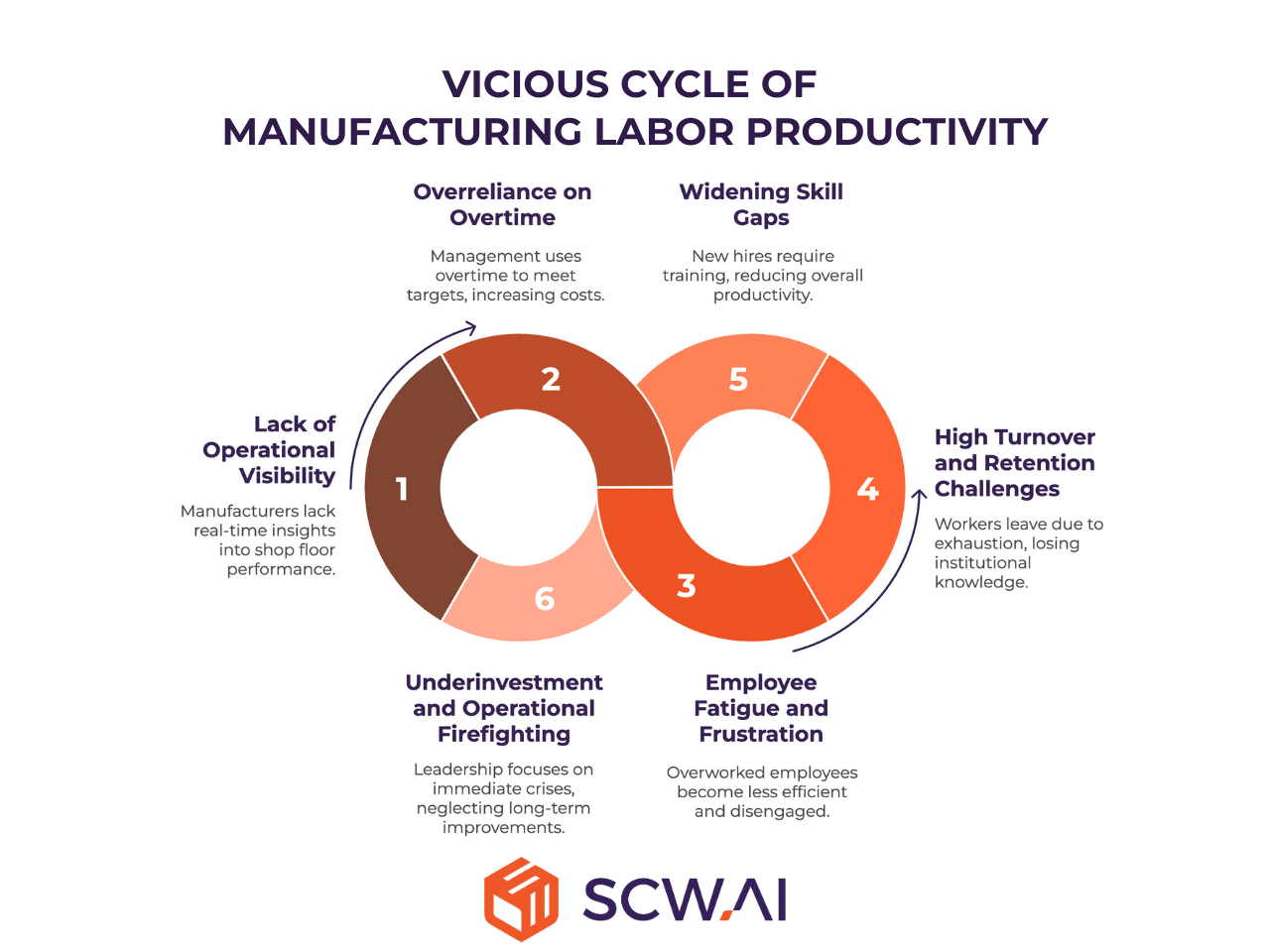
- Lack of Real-Time Visibility: Without granular data from labor, machine, and process analytics, inefficiencies go undetected, becoming chronic bottlenecks that silently drain performance and margins.
- Over-Reliance on Overtime: Overtime is often used as a reactive measure to offset production delays. However, it significantly inflates labor costs (by approximately 15% on average in U.S. facilities) and often becomes embedded in standard operations, undermining cost control and efficiency.
- Fatigue, Turnover, and Attrition: Extended and unpredictable work hours lead to fatigue and burnout. Combined with an aging workforce and younger employees’ increased job mobility, this results in high turnover, early retirements, and mounting retention challenges.
- Cost of Onboarding and Declining Efficiency: Replacing experienced operators is both costly and time-consuming. According to McKinsey, onboarding and training a single new operator can exceed $50,000. In the interim, these new hires often reduce overall line efficiency, increase supervisor workload, and contribute to variability in quality and output.
- Drain on Innovation and Investment: Constant firefighting and compressed margins leave little room for long-term planning. As resources are diverted toward short-term fixes, critical investments in modernization, training, team building and operational excellence are deferred—perpetuating the very issues they are meant to solve.
Strategies to Reverse the Labor Productivity Paradox
To escape this cycle and unlock sustainable growth and value, manufacturers must adopt data-driven, labor-aware strategies that integrate human performance into the core of operational excellence.
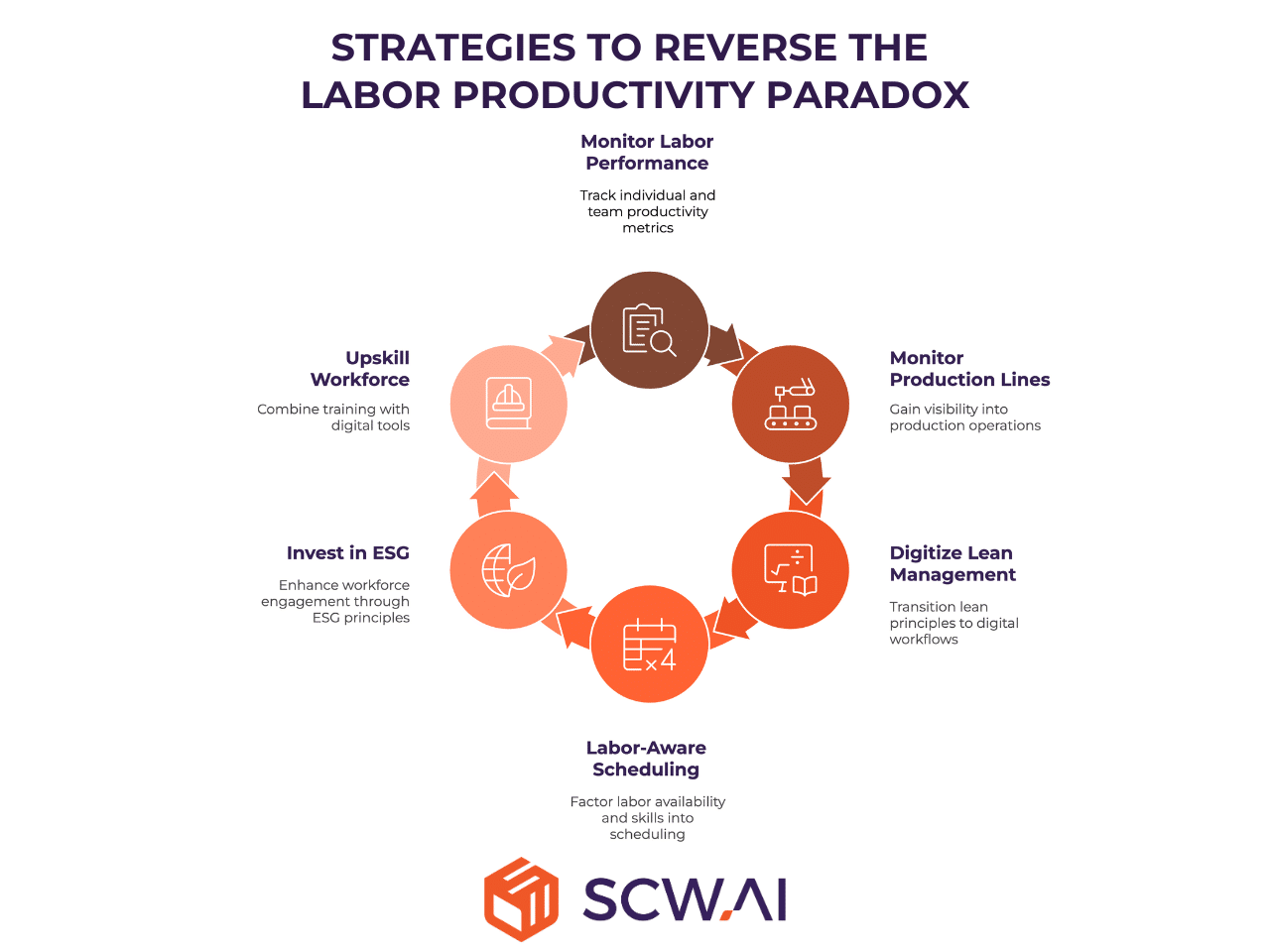
- Monitor Granular Labor Performance: Leverage digital systems to track labor productivity at the individual and team level. Real-time metrics such as task duration, work standard adherence, and utilization rates enable targeted coaching, optimized resource deployment, and early identification of skill gaps.
- Monitor Production Lines and Workstations: Implement manufacturing analytics to gain end-to-end visibility of production operations. Real-time tracking of equipment status, station-level bottlenecks, quality deviations, and unplanned downtime allows for faster root cause analysis and immediate intervention—maximizing OEE, FPY, schedule adherence, and other key manufacturing KPIs.
- Digitizing Lean Management: Transition traditional lean principles into digital workflows. This involves using software platforms to manage continuous improvement initiatives, standardize work instructions and enriching them with videos, images etc.
- Labor-Aware Production Scheduling: Adopt advanced planning and scheduling systems that factor in labor availability, skill levels, fatigue data, and shift preferences. This minimizes reliance on overtime via skill based labor scheduling.
- Invest in ESG-Driven Work Environments: Manufacturers that align with environmental, social, and governance (ESG) principles not only improve sustainability but also enhance workforce engagement. Safe, inclusive, and energy-efficient shop floors are more attractive to new talent and generate long-term brand and cost benefits.
- Upskill the Workforce: Workforce development programs should combine hands-on training with digital tools—such as new machines, analytics dashboards, and automation software—with foundational knowledge of manufacturing processes.
2. Beyond Cost-Cutting: Redefining Production Geography for Strategic Resilience
In the early 2000s, manufacturers from developed nations embraced offshore production to capitalize on lower labor costs, tax advantages, and weaker regulatory environments. While profitable in the short term, this model has since exposed long-term risks—diminished industrial competitiveness, fragile supply chains, and limited agility in responding to disruptions like pandemics or geopolitical tensions.
Today, strategic resilience is overtaking cost-cutting as the dominant logic in production geography decisions. Environmental, social, and ethical concerns, combined with escalating supply chain and competitiveness risks, are pushing governments to change policies that make manufacturers rethink global footprints.
- In the U.S., legislations such as the CHIPS and Science Act, the Inflation Reduction Act and many more are channeling investment into domestic manufacturing while discouraging dependence on foreign supply chains through tariffs and subsidies.
- In the EU, policies like the Clean Industrial Deal and CSRD promote near-shoring and enforce strict environmental, social standards and fair trade across supplier networks.
This policy-driven reconfiguration is already reshaping corporate strategy. A Bain & Company survey found that 81% of CEOs and COOs planned to increase near-shoring or re-shoring activities in 2024, up sharply from 2022—marking a clear pivot away from legacy supply chain models.
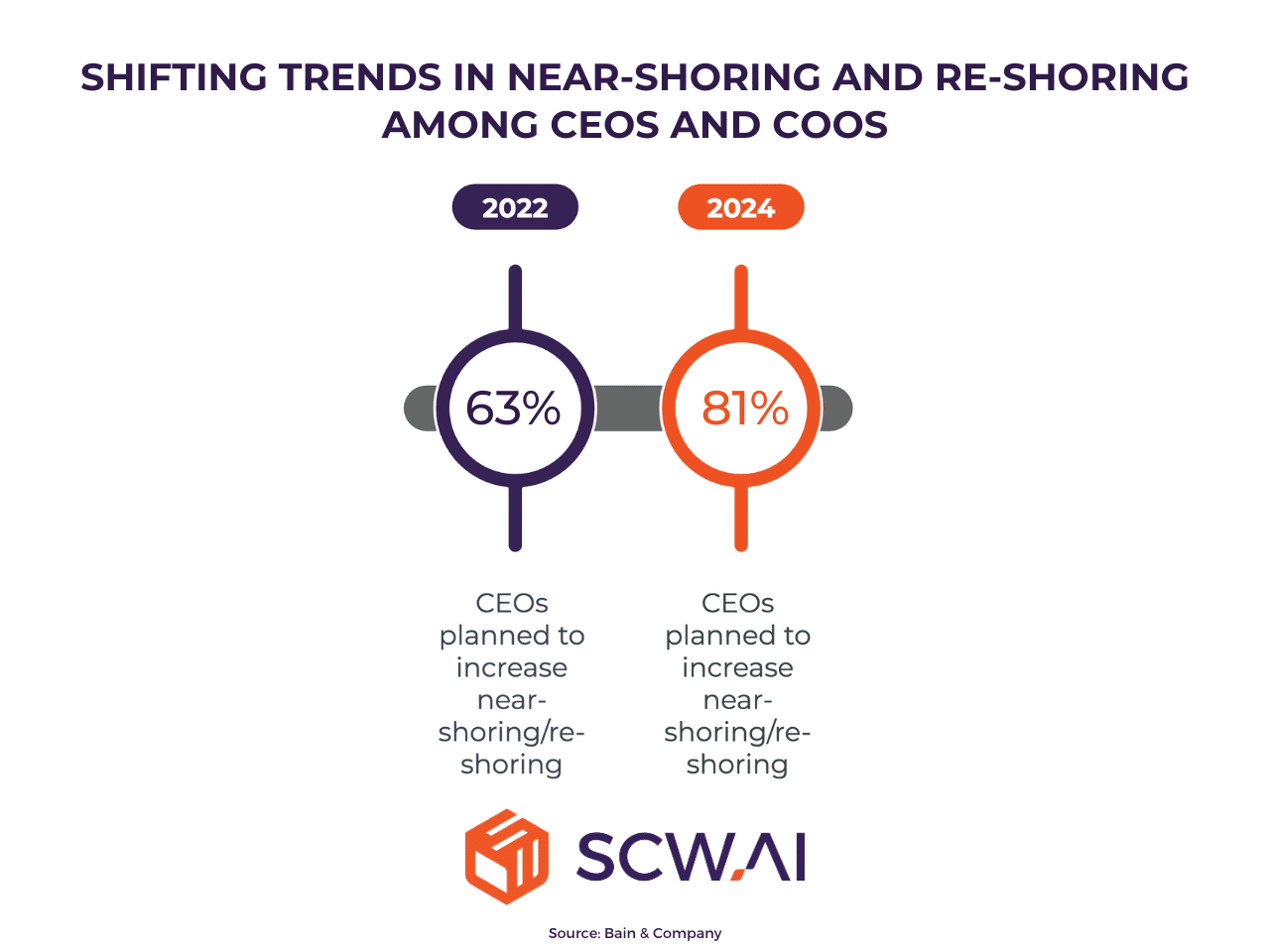
Strategic Site Selection: A New Framework for Decision-Making
Going forward, choosing production locations based solely on low costs is increasingly risky. Manufacturers should adopt a broader, future-oriented evaluation framework that includes:
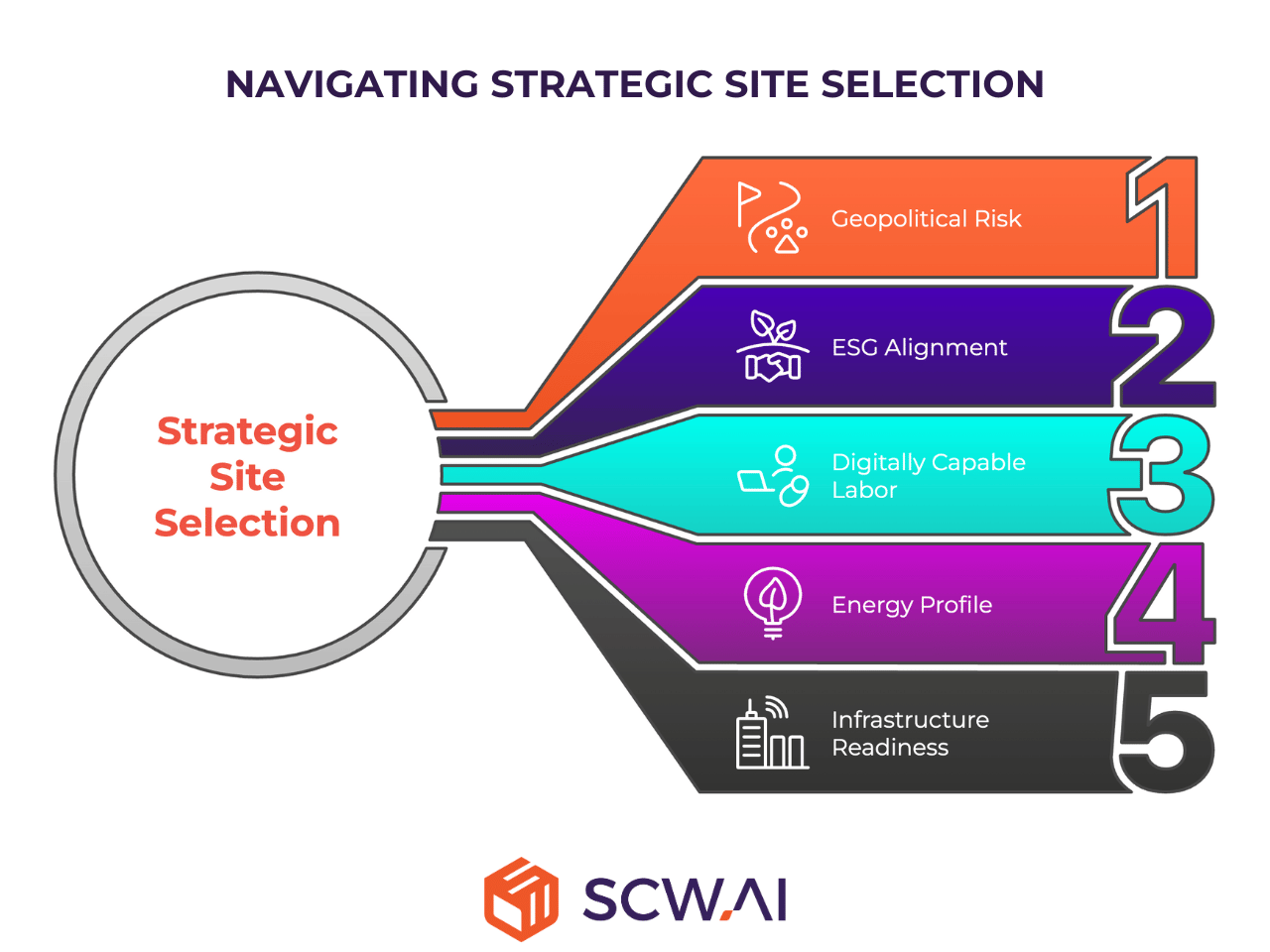
- Geopolitical Risk: Stability, trade relationships, and exposure to sanctions or tariffs.
- ESG Alignment: Production region must support environmental and labor values of main sales geographies, or risk reputational and financial damage.
- Digitally Capable Labor: Production increasingly depends on digitally fluent operators, engineers, and technicians. Site selection must consider access to a workforce that can be trained—or is already trained—for smart manufacturing environments.
- Energy Profile: Not just cost, but carbon intensity and exposure to future emissions regulations.
- Infrastructure Readiness: Beyond traditional utilities, the reliability of digital infrastructure (broadband, cloud access, cybersecurity standards), waste management, logistics, and power resilience are all essential to future-ready operations.
Maximize What You Already Have
Before committing to costly new facilities, manufacturers should maximize idle capacity in existing infrastructure. Re-shoring and near-shoring do not always require greenfield investment. In many cases, underutilized plants can be digitally modernized to deliver significant gains at a fraction of the cost and timeline.
Take, for example, a pharmaceutical manufacturer operating facilities with an OEE of 30–40%—a range that remains typical across much of the industry. Rather than breaking ground on a new facility to increase local production in the U.S., digital transformation of the existing site can unlock substantial capacity and improve time-to-market with significantly lower capital outlay.
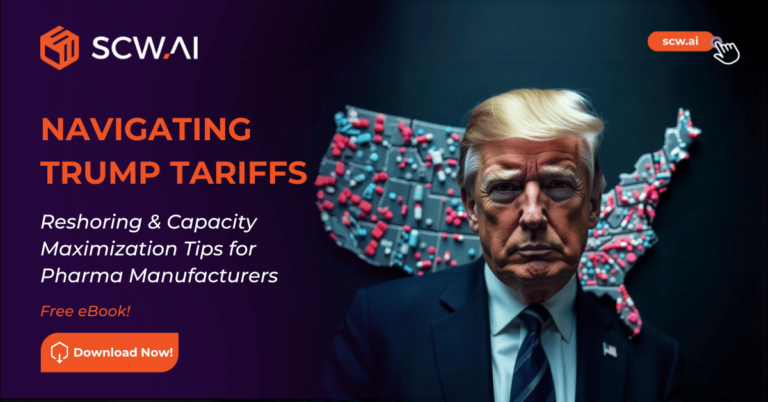
To dive deeper into how pharma manufacturers can capitalize on existing capacity and navigate the complexities of re-shoring, download our free eBook: “Navigating Trump Tariffs: Reshoring & Capacity Maximization Tips for Pharma Manufacturers.
3. The AI Imperative: Winning the Race for Readiness and Unlocking Manufacturing's Full Potential
AI and Generative AI have captured the attention of manufacturers worldwide. The promise is real: intelligent automation powered by AI has the potential to eliminate long-standing bottlenecks—from high machine failure rates and lengthy changeovers to reactive production scheduling and persistent quality issues. The World Economic Forum continues to highlight successful AI deployments in Lighthouse factories across the globe, demonstrating not only technical feasibility but also significant business impact.
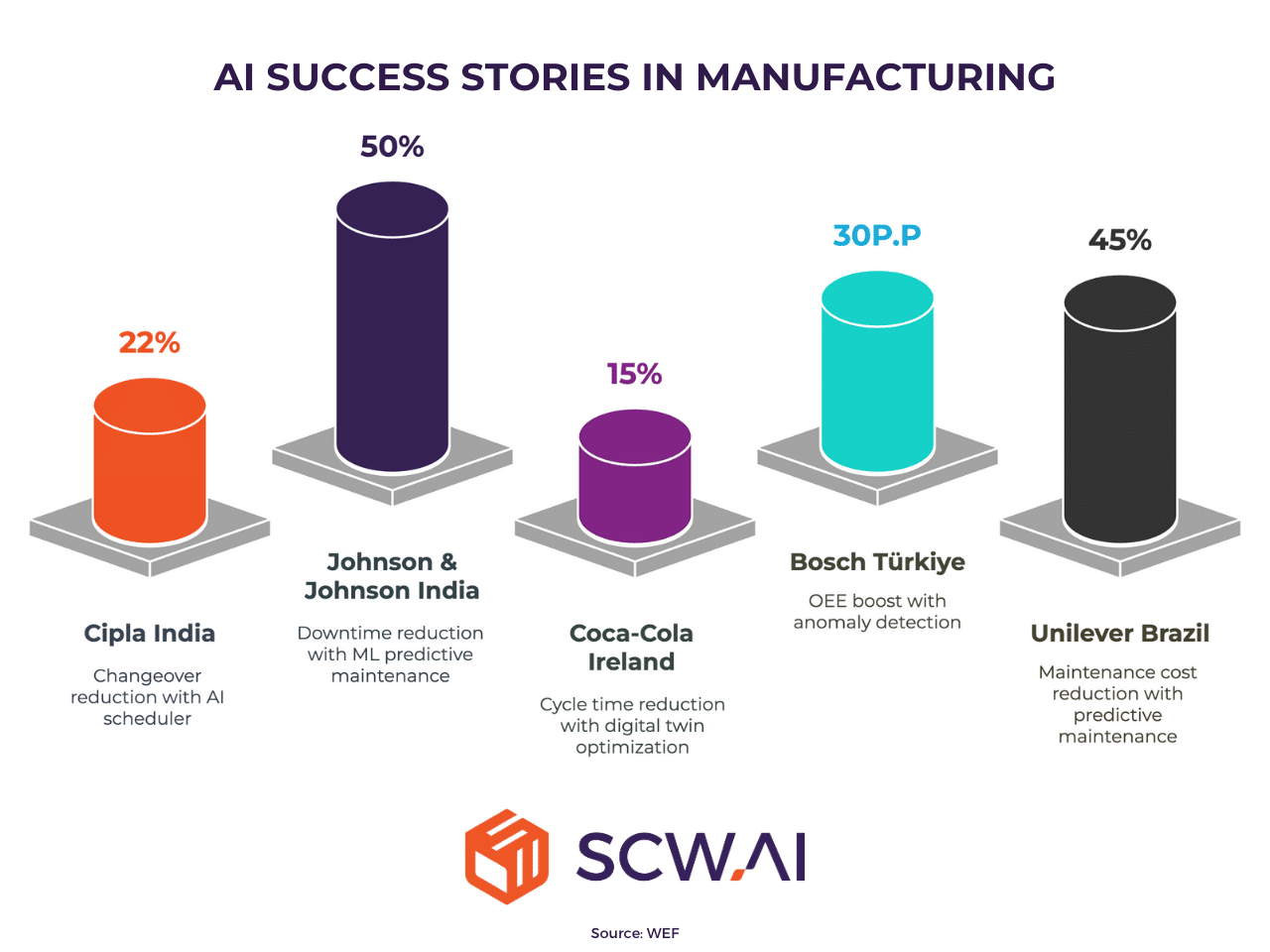
However, these success stories represent the exception, not the norm. Despite the growing interest, most manufacturers face a more complex reality. Recent industry assessments show that over 70% lack the digital maturity needed to implement AI effectively. With only 189 Lighthouse factories identified globally, these sites serve as both inspiration and a sober reminder of how much groundwork remains. The enthusiasm is undeniable—but the foundational capabilities are still largely missing.
Prerequisites for Successful AI Deployment in the Shop Floors
AI cannot thrive in environments where critical data and monitoring infrastructure is lacking. Several roadblocks typically stand in the way:
- Inconsistent or non-automated data collection
- Lack of real-time and continuous data streams
- Poor data quality and reliability
- Siloed data storage systems
- Data security risks
- Difficulty in contextualizing data for operational relevance
As highlighted by Mike Walker, Microsoft’s Executive Director of Global Healthcare and Life Sciences Digital Strategy, in our podcast, attempting to build effective and unbiased AI models for critical applications such as predictive maintenance, production scheduling optimization, or anomaly detection would be an impossible endeavor without a robust data foundation and established production, maintenance, labor, and scheduling analytics.
Laying the Groundwork for AI Adoption
Before deploying AI models at scale, manufacturers must address core prerequisites that ensure data is available, accurate, and actionable. This includes targeted investments in:
- IoT Solutions: To capture high-quality data from machines, human operators, and the shop floor environment.
- PLC/OPC Integrations: To ensure that existing industrial control systems are seamlessly connected to the data architecture.
- Monitoring and Analytics Platforms:To provide real-time, granular visibility into operations and to structure data for algorithm development.

While the specific monitoring needs vary by operation, we recommend manufacturers focus on capturing the following high-leverage metrics to enable a wide range of AI use cases:
- Line and machine status
- OEE and TEEP with their breakdown
- Labor check-in hours and task adherence
- Schedule attainment, adherence, and compliance
- MTTF, MTTR, and MTBF for assets
- Machine-level telemetry: current, vibration, temperature, decibel levels
- Ambient shop floor conditions: temperature and humidity
The sooner manufacturers complete these prerequisites and build a mature digital infrastructure, the greater their opportunity to establish a significant competitive edge in the evolving future of the manufacturing industry. This proactive approach will enable them to harness AI’s potential and outpace less prepared counterparts in a rapidly digitalizing landscape.
4. Forging Collaborative Futures: Ecosystems and Platform Models for Digital Transformation
Manufacturers are confronted with a fundamental truth: what is cutting-edge today becomes legacy tomorrow. This principle is rooted in Moore’s Law, which historically observed that computing power doubles approximately every two years. While the pace of advancement may not be linear across all technologies, the implication for manufacturers remains clear—technological obsolescence is accelerating.
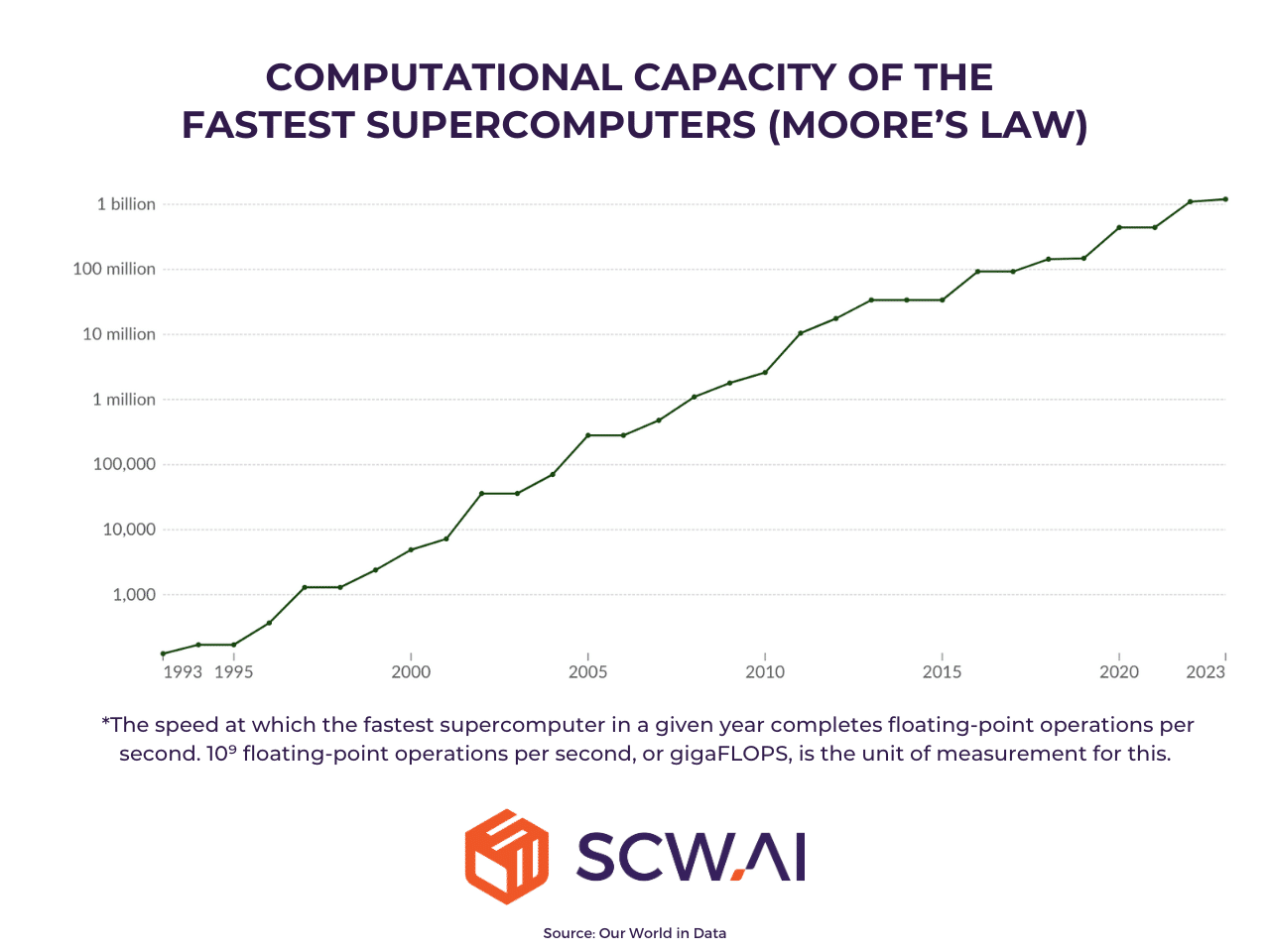
For manufacturers, this creates a strategic dilemma. in-house tools are neither cost-effective nor operationally feasible. No single in-house technology can remain “state-of-the-art” for long, and trying to keep pace with every innovation cycle creates fragmentation, inefficiency, and risk.
The solution lies in ecosystems and platform models that offer scalable, integrated foundations for continuous transformation. Rather than assembling disconnected point solutions, forward-looking manufacturers are increasingly adopting platform-based architectures that ensure different modules—across monitoring, execution, compliance, planning, and sustainability—communicate seamlessly. This connectivity enables better data contextualization, smoother workflows, and a more agile response to business needs.
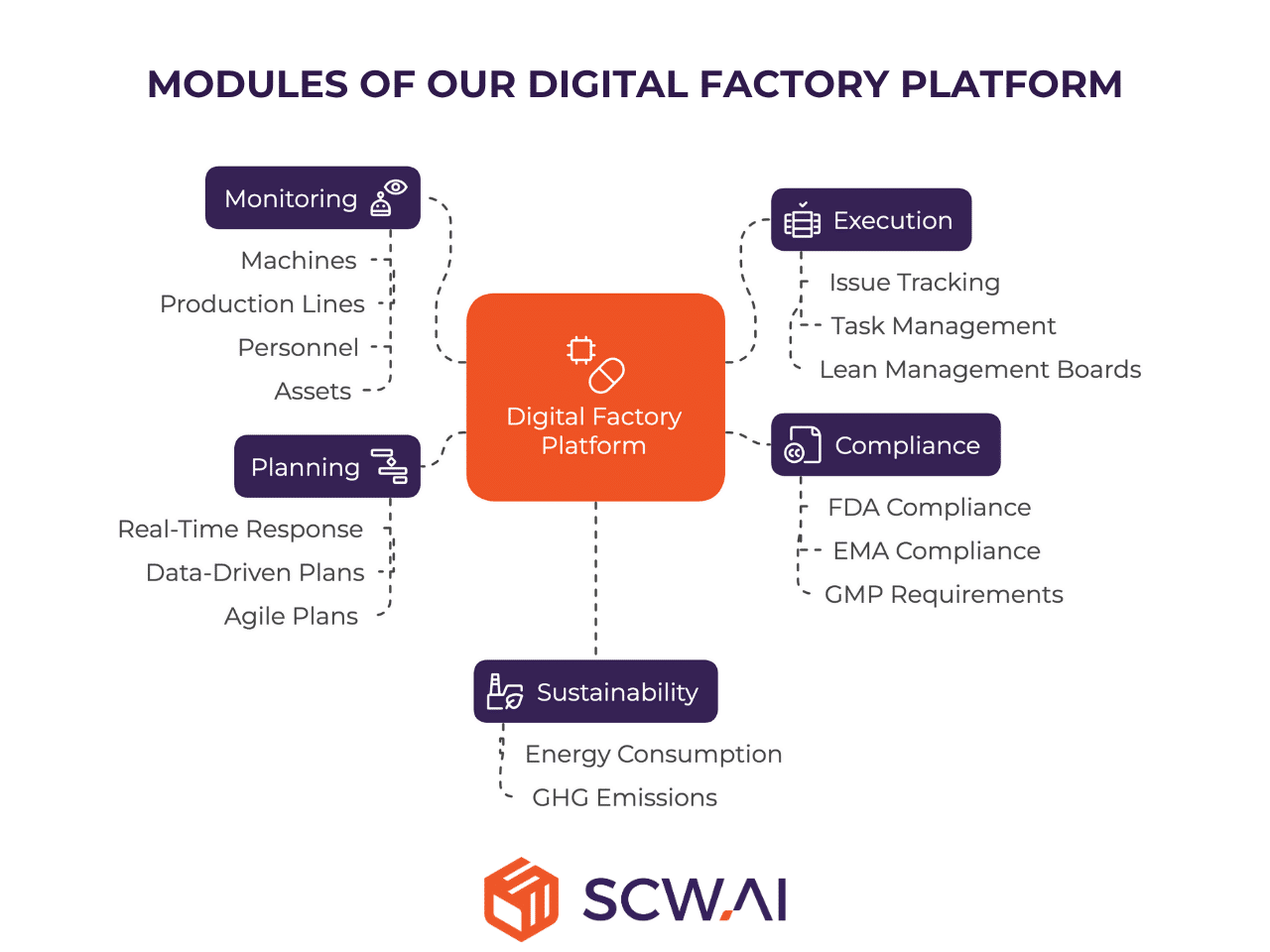
However, choosing the right platform and technology partners is now a strategic imperative. Vendor selection must go beyond software capabilities alone. Each manufacturing vertical—from pharmaceuticals to automotive to food processing—has its own regulatory landscape, operational nuances, and change management challenges. A platform optimized for pharma may not translate effectively to discrete manufacturing environments, and vice versa.
To truly future-proof their operations and ensure sustained competitive advantage, manufacturers must prioritize partnerships with vendors who demonstrate:
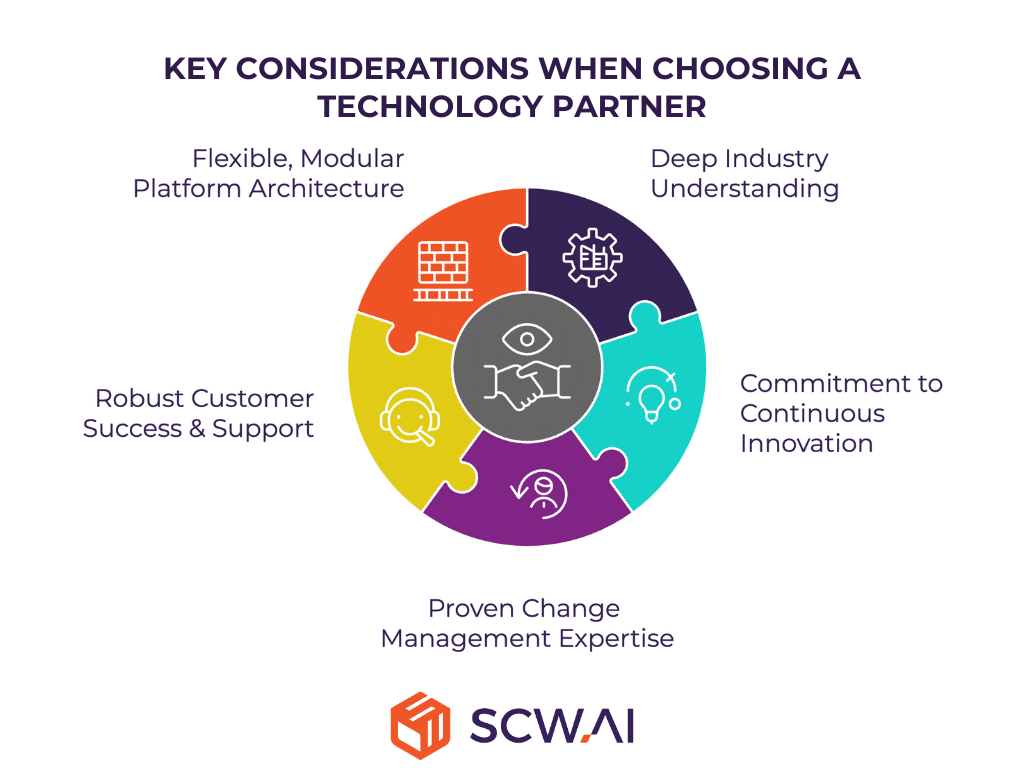
- Deep Industry Understanding: A profound comprehension of their specific industry, including its regulatory frameworks, operational intricacies, and market dynamics.
- Commitment to Continuous Innovation: A clear and consistent track record of modernizing their solutions, enhancing user engagement, and integrating the latest technological advancements to ensure the platform remains cutting-edge.
- Proven Change Management Expertise: Demonstrated success in guiding complex digital transformation journeys and managing the associated organizational and cultural shifts.
- Robust Customer Success and Support: Dedicated teams capable of providing strategic guidance, fostering best practices, ensuring smooth adoption, and facilitating continuous improvement cycles.
- Flexible, Modular Platform Architecture: A design that allows for seamless scalability with emerging business requirements and effortless integration of new technologies without necessitating costly and disruptive overhauls of the entire system.
In essence, successful digital transformation is no longer solely about procuring isolated tools; it is fundamentally about identifying and cultivating the right strategic partners and building interconnected digital ecosystems. Manufacturers that proactively align with the optimal platforms and partners today will significantly increase their probability of leading the industry tomorrow.
Conclusion: SCW.AI and the Path to Future-Ready Manufacturing
The manufacturing industry stands at a critical crossroads. As the landscape continues to evolve under the pressure of economic, technological, and demographic shifts, manufacturers must rethink how they operate. As outlined in this article, digital factory transformation is not just an option, it is a strategic imperative. Data-driven, intelligent decision-making is key to navigating today’s complexities and positioning for long-term success.
SCW.AI offers a powerful path forward. Our modular Digital Factory Platform is purpose-built to meet the evolving digitalization needs of highly regulated and process-intensive industries—particularly pharmaceuticals, cosmetics, and food & beverage. The platform is scalable, easy to deploy, and adaptable to each manufacturer’s unique digital maturity.
Whether you are just beginning your digital journey with real-time shop floor monitoring or are ready to implement manufacturing AI solutions, SCW.AI provides the flexibility and depth to support your goals.
To learn more about how SCW.AI can help future-proof your factory, connect with us today.
Ready to see it in action? Book a demo and explore the future of manufacturing powered by SCW.AI.

